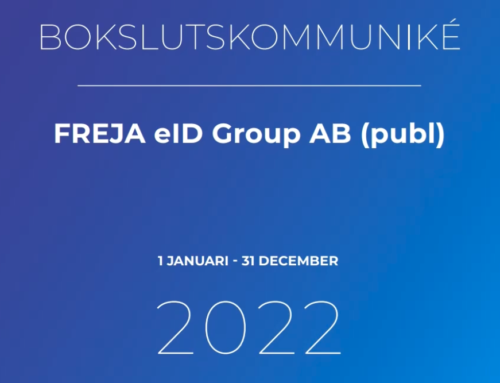During E-legdagarna 2022 we met with Madeleine Davidsson backstage to talk about employee eIDs. At the time Madeleine was Project Manager for IT & Digitalisation at Malmö City Council, who were the first customer to implement Freja Organisation ID, and she was a key player in this process. Recently, Malmö City has also become the first customer to sign an agreement for cross-organisational employment eID.
What was the decision process when Malmö City was choosing a solution for employee identification?
There was a clear need in the Home Care service, to become more mobile and flexible, and we needed a way to work with the LMO app as well as unlock doors at users’ homes. Part of what is called keyless home care.
We realised that we needed a broad, flexible solution, where there was a secure identity and we didn’t have to deal with administration so to speak. It was very clear in the organisation that administration took up a lot of time and resources. When we heard about Freja we saw that here we would have that flexibility and less administration. Especially considering that we use private phones which we subsequently connect to the Employee eID.
In which areas of the organisation are Malmö City planning to use employee eIDs?
The need really originated within the Health and Social Care services, like I mentioned with handling of keys, and we saw that we needed a mobile way of working with this, to put it simply. It’s in the care services and school administration where we see the greatest demand, and where the development is strongest.
We’re running pilot projects in both areas and we know that there’ll be a lot happening next year, the cork will pop so to speak, as we’re estimating we’ll have around 12-13,000 employee eIDs issued in the city, so that’s the goal we’re working toward.
How has implementation and deployment worked for you?
We’re really a resource that helps the various administrations within the city, and they’re the ones pushing for development and networking within the organisation. We’re a supporting piece, for example we have ProRenata, the student health service, and after we finished the pilot project with them we, as always, received feedback where we looked at “Ok, what could we do better, what have they learned, what do they need to do better” etc.
We then package this and take it to the next administration that’s interested. So this kind of close collaboration with the various administrations really helps us to better support, for example, managers who are often the ones that have to handle uncomfortable conversations or even conflicts that can arise with staff who sometimes feel uncomfortable using eIDs but are more than happy to show their driving licence. So tight collaboration, feedback, and follow-up with the administrations has been vital.
What advice do you have for other municipalities looking into employee eIDs?
First off, ensure that it’s driven by the administrations. We’re an IT organisation and if it were to come from us there would be a lot of people that feel ‘IT is complicated, this is impossible’, so it’s really important that the administrations are the drivers of change when it comes to these processes.
Something else that we experienced while we were working with this is that the unions aren’t exactly positive to the use of BankID. So make sure to involve the unions early on.
So, administrations early on, unions early on, and inform managers and IT staff in the administrations so that they have some kind of Q&A battery, or better yet really understand it and are able to field questions that arise. So that’s what I would say; unions, tight collaboration, communication and information so that everyone feels secure. Those have all really been key to success in our case.






